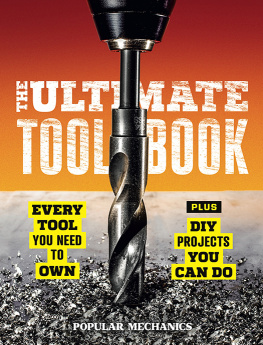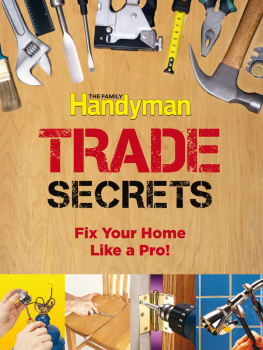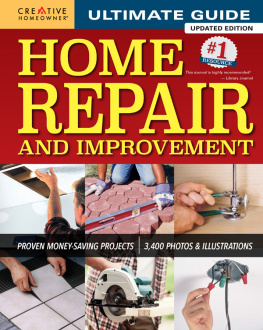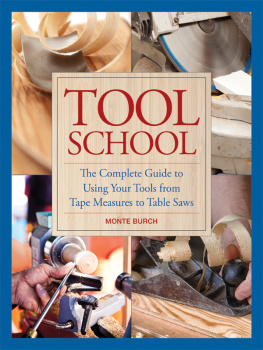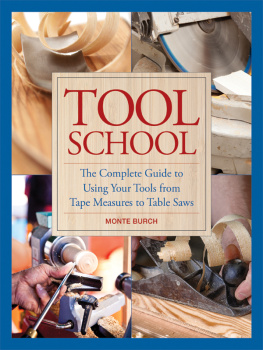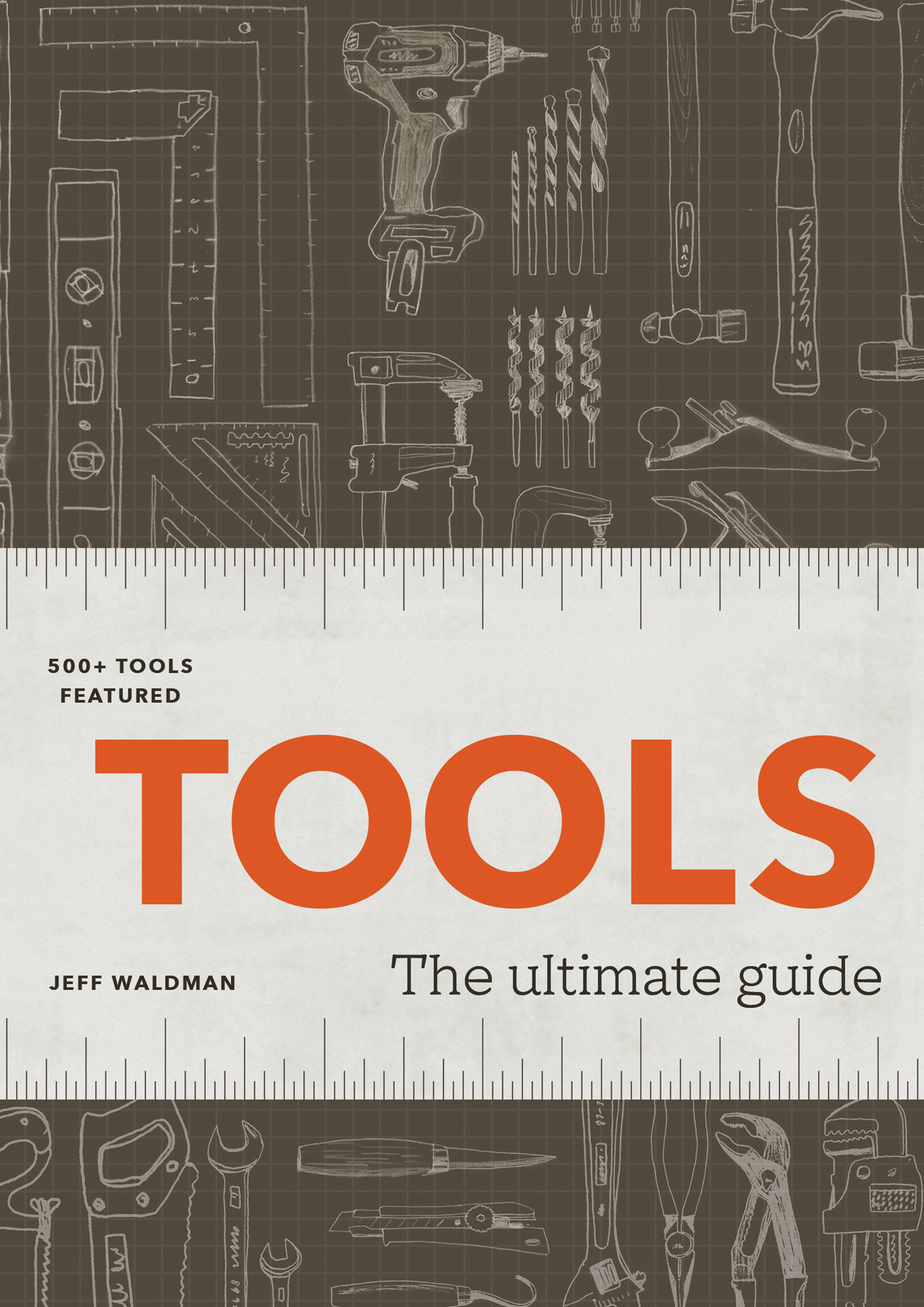Contents
Guide
Pagebreaks of the print version
TOOLS

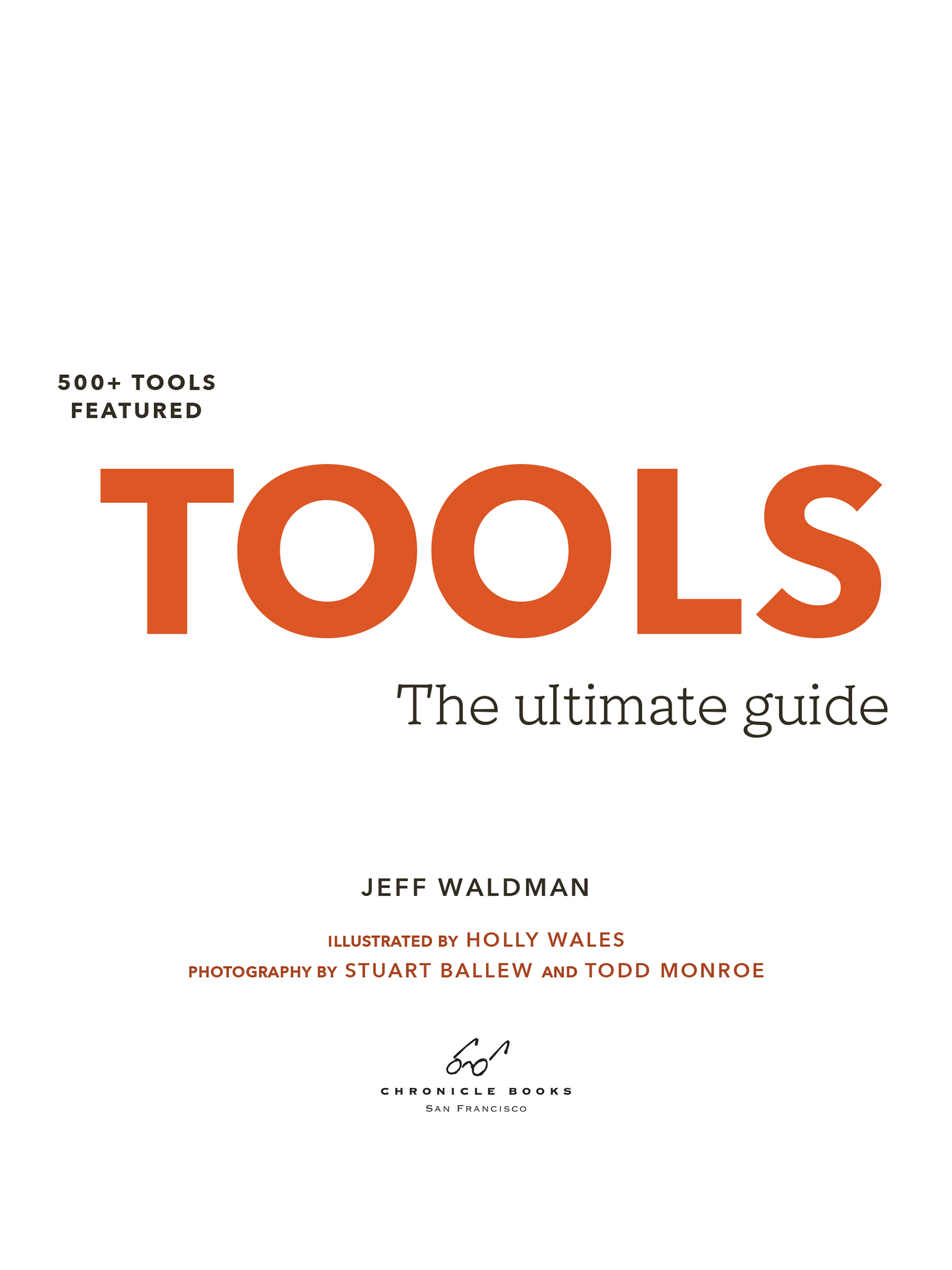
Text copyright 2022 by Jeff Waldman.
Photographs copyright 2022 by Stuart Ballew and Todd Monroe.
Illustrations copyright 2022 by Holly Wales.
All rights reserved. No part of this book may be reproduced in any form without written permission from the publisher.
Library of Congress Cataloging-in-Publication Data
Names: Waldman, Jeff, author. | Wales, Holly, 1983- illustrator. | Ballew, Stuart, photographer. | Monroe, Todd, photographer.
Title: Tools / Jeff Waldman ; illustrated by Holly Wales ; photography by Stuart Ballew and Todd Monroe.
Identifiers: LCCN 2021035712 | ISBN 9781797209876 (hardcover) | ISBN 9781797209883 (epub)
Subjects: LCSH: Tools--Catalogs.
Classification: LCC TJ1200 .W35 2022 | DDC 621.90075--dc23
LC record available at https://lccn.loc.gov/2021035712
Design by Rachel Harrell.
Typesetting by David Van Ness.
Typeset in TT Phobos and Avenir.
Ace Hardware is a registered trademark of Ace Hardware Corporation. Allen Manufacturing Company is a registered trademark of Apex Tool Group. Anvil and Huskey are registered trademarks of Home Depot Product Authority, LLC. Arrow Company is a registered trademark of Arrow Electronics, Inc. Black & Decker is a registered trademark of The Black & Decker Corporation. Buck Brothers is a registered trademark of Craftsman Studio. Channellock is a registered trademark of Channellock, Inc. Chevy is a registered trademark of General Motors Corporation. Craftsman is a registered trademark of Stanley Black & Decker, Inc. Dremel tools is a registered trademark of Robert Bosch Tool Corporation. Dykem is a registered trademark of Illinois Tool Works Inc. Fein International is a registered trademark of C. & E. Fein GmbH LLC. Hitachi is a registered trademark of Koki Holdings America Ltd. Knipex is a registered trademark of Knipex-Werk C. L. S. Macklanburg Duncan is a registered trademark of M-D Building Products, Inc. Mikuni is a registered trademark of Mikuni American Corporation. Ridgid is a registered trademark of RIDGID, Inc. Robertson Screw Company is a registered trademark of Marmon-Bershire Hathaway Company. Sharpie is a registered trademark of Sanford, L.P. Newell Operating Company. Skilsaw is a registered trademark of Nanjing Chervon Industry Co., Ltd. Starrett Company is a registered trademark of Starrett. Stabila is a registered trademark of Arturo Salice SPA. Styrofoam is a registered trademark of Dow Chemical Company. Swanson Tool Company Speed Square is a registered trademark of Swanson Tool Co. Swiss Army Knife is a registered trademark of Wenger S.A. Utrecht is a registered trademark of Utrecht Art Supplies. Volkswagen is a registered trademark of Volkswagen. Aktiengesellschaft.
Chronicle Books LLC
680 Second Street
San Francisco, California 94107
www.chroniclebooks.com
TABLE OF CONTENTS
INTRODUCTION
This book is an exploration and celebration of tools. Its not a complete reckoning, but it spans most commonly encountered tools and many of their lesser known variants. Its an attempt to unravel the complex tapestry of how tools relate to one another, their use, and the esoteric language that enshrouds them. Simply put, this book will teach you what a hammer is, tell you which one to buy, and explain how it came into being.
Tools are an important part of the human story. Our evolution is chronicled by the tools weve made. Stone Age. Bronze Age. The Industrial Revolution. Sure, in part its because those tools are the remnants that survive us, waiting millennia to be unearthed along some riverbank, but its also because our ability to shape the world around us is largely whats defined our species. Weve been doing it for millions of years, and in lockstep our evolution of purpose-built tools has grown in size while also becoming ever less approachable.
Thats the difficulty of these storied objects. They are an intimidatingly deep well of specifications and jargon thats daunting to unpack.
Think of this book as a low-resolution map. While it might not have detailed information on every tool, it provides context, connecting the dots for the newly interested while filling in some gaps for the more seasoned. By cataloging a wide variety of tools, I hope to plant the seeds for future discoverability and help you ask the right questions.
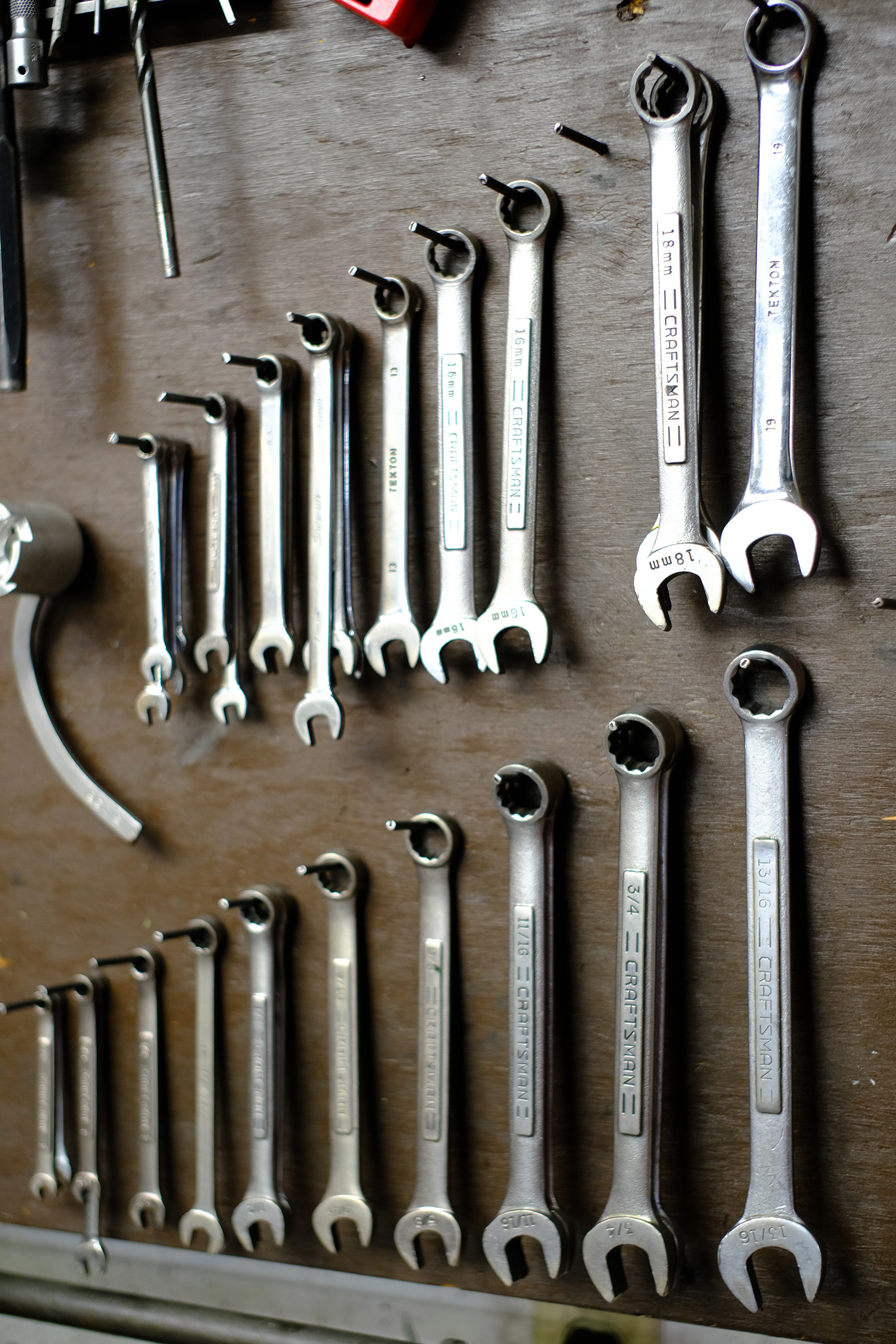
This is exactly the sort of resource I wish I had owned before embarking on my own self-taught journey of tool purchasing, tool use, and constructing a veritable homestead and cabin. It would have alleviated much wasted time and confusion.
When my partner, Molly, and I first purchased our land, it was an undeveloped bramble, with one unmaintained road dividing a steep ten acres of oak and redwood. At the time, all I owned was a cordless drill and a few other apartment-grade hand tools. I had a little experience with tools and building, but my knowledge was piecemeal and inadequate for designing and developing an off-grid property.
We started simple, with a picnic table and benches, then a firewood cubby, and soon elevated tree decks, an outhouse, and an outdoor shower. Many other small and larger projects with our friends followed, each one building upon the experience of the last. We were emboldened by each success and by the lessons learned in failure, and it showed in our evolving aspirations. Learning about some new tool or technique would open the door to discovering another, and this fostered a deep appreciation for each tools qualities.
But our progress was also stilted. I was frequently stuck on the most basic questions concerning the right tool for the job or conventional practices, and I got bogged down under the weight of too many options and too much information. Am I using this the wrong way? Am I losing time to the incorrect tool? How did I just cut myself? And always I faced the aforementioned problem of finding the proverbial tool catalog daunting to unpack. There are SO MANY tools.
When I first considered the leap into nail gunsa tool I knew was critical to an eventual cabin buildI read up on the different types: powder-actuated, air, gas, electric. Within those categories, models were further divided by their specifications. There was a lot to sift through, but I was particularly hung up on each guns angle. Some were 30, others 21, and so on. Degrees of what? Which was better?
It turns out that the angle is inconsequential, but questions like this stymied my decision-making for over a year because I knew that some numbers definitely matteredmistakes can cause decks to collapse like beach chairsbut I didnt always know which numbers mattered.
I ground through the questions and confusionnail guns includedtaking missteps and baby steps, building confidence and competence. In time I gained an intuitive understanding of the right tool for the job and an earned familiarity with the wrong tool for the job. I amassed tools and, more importantly, the skill to use them.
When Molly and I (along with a sizable cohort of friends) took on the challenge of designing and building our cabin, it was intimidating to say the least, but when we completed construction a year later, it was no ramshackle hut. Instead, it had a polished interior with high ceilings and lots of glass and was perched on a hill with a view across the valley. Wed started down a road that was scrappy and uncertain but eventually completed a project that was featured in books and architectural magazines and garnered enough admiration that our expertise was now being sought. I had a real feeling of accomplishment standing on our cabin deck, marveling at all the hard-won experience and knowledge I had gained through trial and error.



